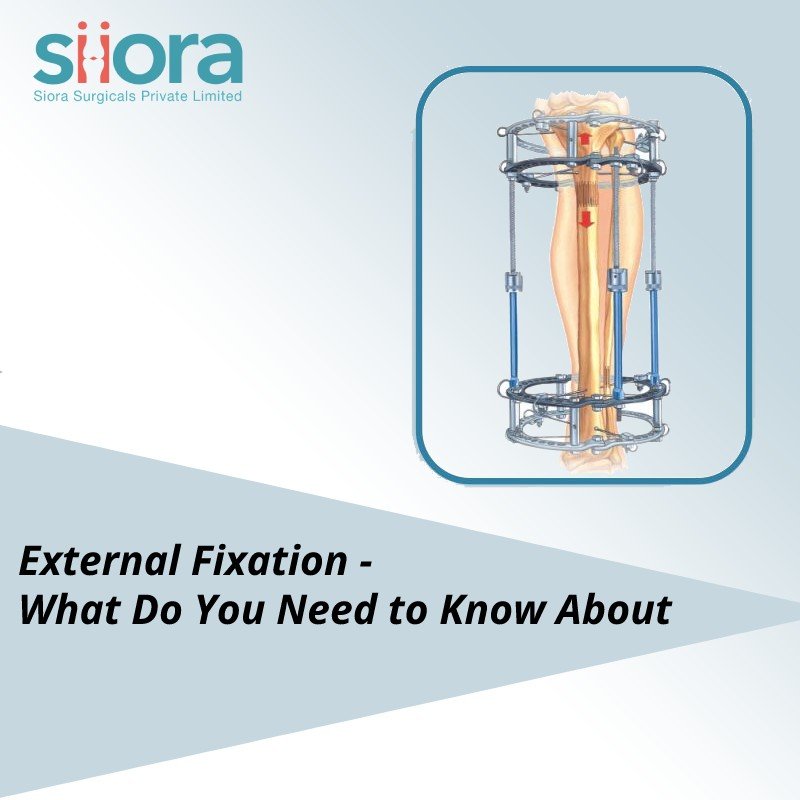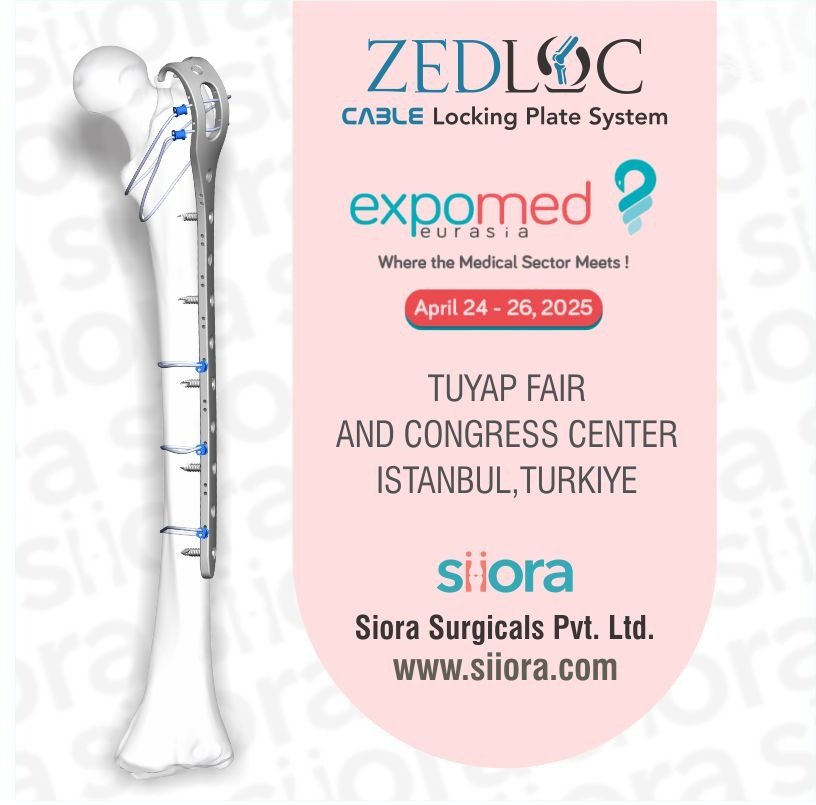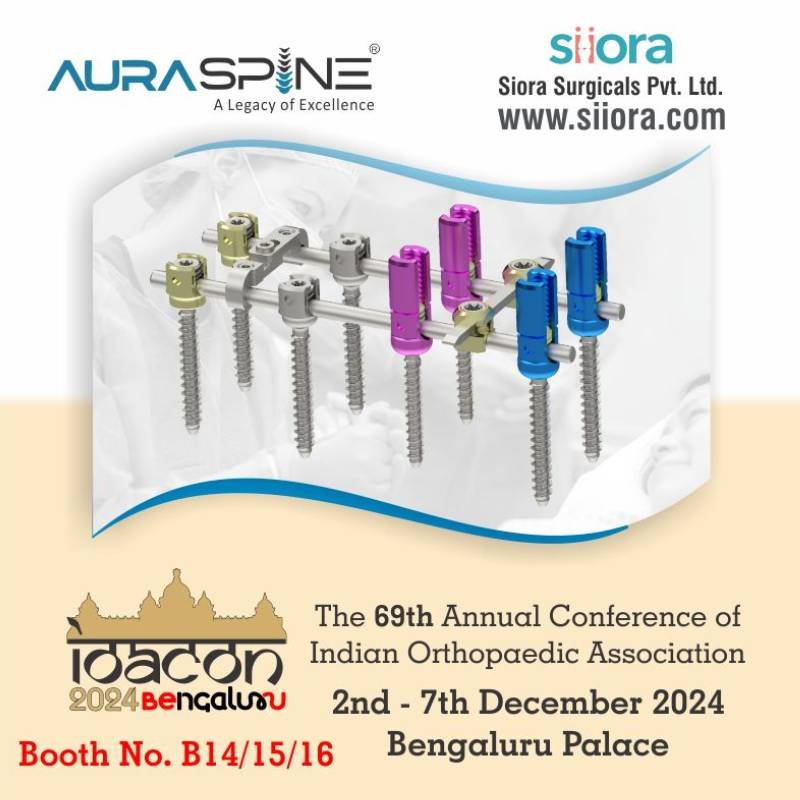The most common surgery that orthopedic specialists perform to treat fractures and other orthopedic injuries is open reduction and internal fixation. However, sometimes the fracture is severe enough that ORIF is not feasible right away. In such cases, the surgeon recommends external fixation.
In this post, we will see external fixation in detail along with its procedure. Let us start with its brief introduction.
What is External Fixation?
External fixation is a surgical technique that orthopedic specialists perform to treat severe fractures. This surgery involves the use of K-wires and pins that surgeons insert and fix into the bones. These implants are then attached to an external apparatus which comprises metal rings, threaded rods, and screws. This system of external fixators is also called the Ilizarov apparatus. The external fixator system holds the broken bone fragments in the correct anatomy from the inside and facilitates healing. This surgical technique stabilizes bone and soft tissues without making much contact with the site of injury.
An external fixation is often a temporary option for the treatment of fractures for which internal fixation is not feasible right away. Orthopedic surgeons often choose this surgical technique when the patient is suffering from severe injuries and there are other life-threatening injuries that need treatment at first. To perform internal fixation, the overall condition of the patient must be stable. So, in cases where the patient is not stable, external fixation serves as the first line of fracture treatment.

What is the Process of External Fixation?
During external fixation, the orthopedic surgeon realigns the broken bone and drills holes through the skin into the bone before applying bone screws, wires, and pins. These implants are then affixed to the external hardware system to keep the bones in alignment. The advantage of using an external fixation system is that it provides the ease of adjusting bone alignment from outside to ensure proper healing. For this, the healthcare service provider may perform a periodic examination of the fracture site and adjust as required.
However, while making the incisions for the application of an external fixator, the orthopedic specialist needs to take special care. This is because the risk of infection is there. Thus, the patient must also keep surgical wounds clean to minimize the chances of infection. To look for the signs of infection like redness, itching, and inflammation, the healthcare service provider will keep monitoring the incisions.
External fixation is carried out under general anesthesia to keep the patient unconscious during the procedure. During the surgery, the surgeon needs special orthopedic instruments to properly fix the external frame.
What Else External Fixation is Used For?
Besides severe fractures, orthopedic specialists also perform external fixation surgery for limb length discrepancies. During the procedure, the surgeon will cut the bone diagonally and hold both sides of the bone using an external fixator. Both parts of the bone are then gradually pulled apart over a period of time to create a small gap. As a result, the new bone starts to form in the gap through a process known as distraction osteogenesis. Thus, the length of the limb increases, and the discrepancy solves.
Besides this, the technique can also be used for fixing non-unions, severely comminuted & unstable fractures, soft tissue injuries like severe burns, and pelvic ring disruptions.
What Are the Advantages of External Fixation?
External fixation may not be the first line of treatment for all fractures, however, it has several advantages over internal fixation:
- This surgery poses a lesser risk of infection than internal fixation
- Lesser blood loss is there during the application of external fixators
- External fixators are easier to adjust than internal fixators after surgery
- Ensures easy access for wound cleaning without disturbing the fixation
- Lesser damage to the blood supply in the fractured area
- Facilitates simultaneous treatment of bones as well as soft tissues
What Are the Disadvantages of External Fixation?
With advantages, there are also certain disadvantages of the procedure, and they may include:
- It requires special maintenance and care
- The external frame applied is heavy and hence, makes it difficult to move around
- Poses a risk of fracture at the sites with rods, once removed
- Infection at the sites on the skin where pins and rods are may occur
- Increases the time of bone healing
How to Manage Daily Activities with an External Fixator in Place?
It is important to adjust routine activities when an external fixator system is in place. Here are some of the points that you need to consider managing daily life easier with this fixator in place:
Moving Around
Fatigue is likely when you have an external fixator in place around one of your limbs. This is because the frame is heavy, and it is not easy to move around carrying it. Thus, use a walking aid to support your body and move with much more ease. Here, make sure to only move when it is necessary as putting unnecessary stress on the operated limb could cause severe complications.
Handling Weight
If you have an external fixator in place, you must not lift heavy objects as this could dismantle the frame and disrupt the alignment of the bone. So, be careful while handling anything.
Bathing
Bathing is a tough ask with an external frame. However, you can take shower but make sure that no infection at the sites with pins occur. Besides this, do not submerge the frame in water, and avoid using fragrant soaps and shower gels. After the bath, pat dry the frame and pin sites using a clean towel.
Sleeping
Again, sleeping with an external fixator frame is also not easy. First, you need to use a mattress protector as the frame may damage the mattress. Besides this, use extra pillows for a comfortable position of the limb with a frame.
Clothing
With an external metal frame around your limb, you will not be able to wear normal clothes. Thus, find a tailor to stitch loose clothes and if possible, apply Velcro instead of buttons or zippers to wear them quickly and easily. The clothes must be loose enough to cover the frame easily.
Siora Surgicals Pvt. Ltd. is an experienced manufacturer of a CE-certified range of orthopedic implants and instruments including external fixator systems. It has an extensive global reach with around 130 national and international distributors and orthopedic surgeons. Siora also offers high-quality OEM/contract manufacturing services around the globe.







